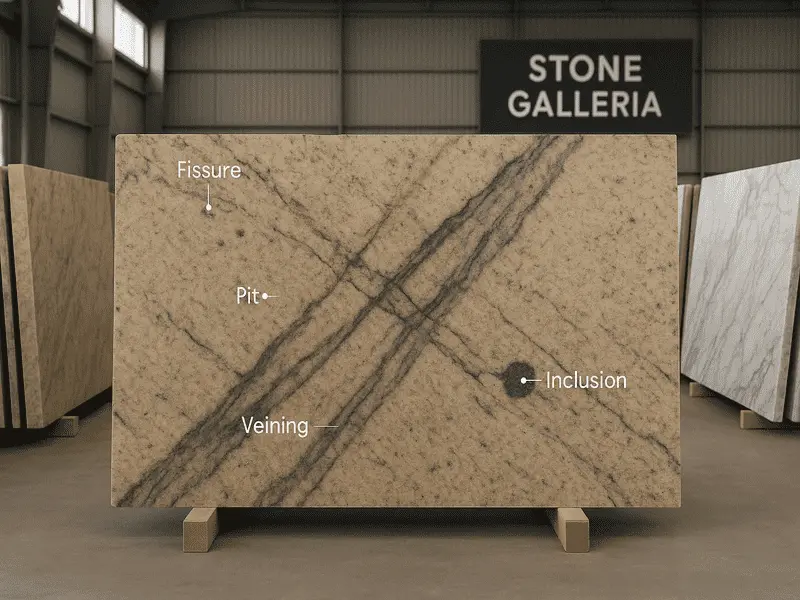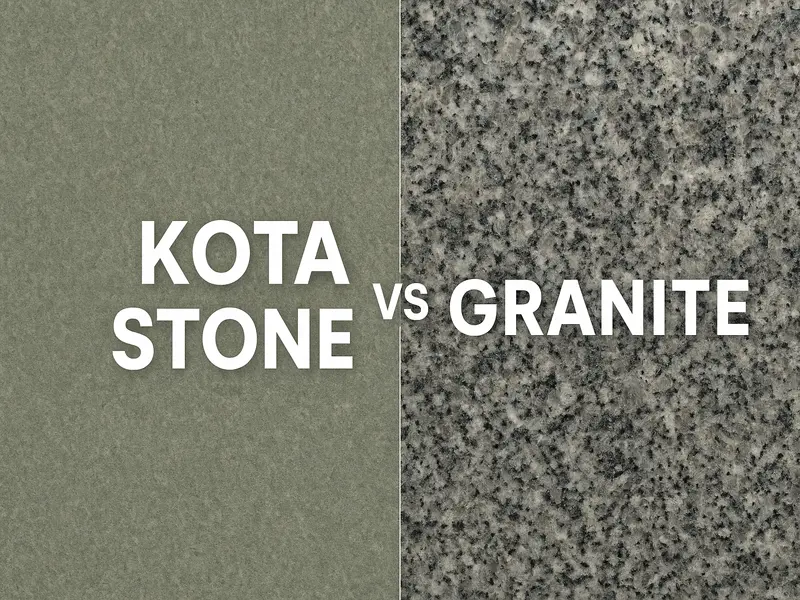When selecting granite for your project, whether it’s for countertops, flooring, or other surfaces, understanding the difference between 2cm and 3cm granite slab is crucial. This seemingly small detail can have a significant impact on the durability, cost, and overall look of your installation. While 2 cm granite offers a sleek and cost-effective option for many applications, 3 cm granite provides added strength and a more substantial appearance, making it suitable for high-traffic areas or more demanding uses.
Imagine installing new countertop that looks perfect but doesn’t hold up under daily use—frustrating, right? Or, consider opting for a more affordable thickness only to find that it doesn’t meet your expectations for strength or style. While having a basic understanding of these differences is valuable, consulting with architects or interior designers is also crucial. These professionals can provide expert advice tailored to your specific project requirements, helping you make the best choice between 2cm vs 3cm granite.

Why is it Important to Understand Difference Between 2 cm and 3 cm Granite Slab?
Understanding the difference between 2 cm and 3 cm granite is essential for any project. This choice impacts not only the durability and cost but also the design of your space.
Functionality and Durability: Thicker granite, like 3 cm, offers greater strength and is ideal for high-traffic areas, while 2 cm granite is often sufficient for less demanding applications and can be more cost-effective.
Cost Considerations: 3 cm granite generally costs more, but its durability might justify the expense for heavily used surfaces. In contrast, 2 cm granite provides an economical solution without compromising on style for lighter use areas.
Design and Aesthetic Choices: Thicker slabs allow for more elaborate edge profiles and a more substantial look, whereas thinner slabs offer a sleek, modern appearance and ease of installation.
What is the Difference Between 2 cm and 3 cm Granite?
Granite slabs typically come in various thicknesses, with 2cm (approximately ¾ inch) and 3cm (approximately 1¼ inches) being the most common ones. The main differences between these thicknesses include:
- Thickness and Weight: The 3 cm granite is thicker and heavier than the 2 cm granite. This additional thickness can offer a more substantial appearance and increased durability.
- Strength and Durability: The 3 cm granite is generally stronger and more resistant to bending and cracking compared to the 2 cm granite. This can be particularly important for areas with high traffic or heavy use.
- Edge Profiles: Thicker granite allows for more elaborate granite edge profiles. If you want a more detailed or rounded edge, 3 cm granite is often a better choice.
ASLO READ | Granite Slab Size – Standard & Custom Size | Finding the Right Fit for Your Project
.webp)
2cm vs 3cm Granite Countertops
When choosing between 2 cm and 3 cm granite for countertops, consider the following:
- Aesthetic Appeal: 3 cm granite tends to look more substantial and luxurious due to its thickness, which can enhance the overall appearance of the countertop.
- Support and Installation: 2 cm granite may require additional support, such as a plywood underlayment or extra bracing, to prevent bending or sagging. In contrast, 3 cm granite often provides more natural support due to its thickness. Installation of 3 cm granite can be more straightforward due to its inherent strength, while 2 cm granite might need extra care during installation to avoid damage.
- Cost: Typically, 3 cm granite is more expensive than 2 cm granite due to the increased amount of material and additional cutting and processing required. However, the added cost may be justified by the improved durability and aesthetics.
- Edge Profiles: With 2 cm granite, simpler granite edge profiles are more common due to the limitations in thickness. For more elaborate or detailed edges, 3 cm granite is preferred.
ALSO READ | What Is the Ideal Granite Thickness for Countertops?

The Science Behind Choosing 3cm vs 2cm Granite Slab
When selecting granite for your project, understanding the science behind granite thickness is essential for making an informed decision. Granite’s physical properties, particularly its density and structural integrity, play a crucial role in determining whether 2 cm or 3 cm slabs are more suitable for your needs.
Density and Strength: Granite density, measured in kilograms per cubic meter (kg/m³), affects its strength and durability. 3 cm slabs, has a greater mass of mineral particles packed into the same volume, resulting in improved structural stability and resistance to bending or cracking. Scientific tests reveal that granite density can range from 2,600 to 2,800 kg/m³, with denser varieties offering higher compressive strength—up to 100 MPa. This increased density makes 3 cm granite more resilient under heavy loads and high-traffic conditions compared to the less dense 2 cm granite, which, while still durable, may not provide the same level of strength.
Granite Porosity also plays a role in determining the suitability of granite thickness. Thicker granite slabs often exhibit reduced porosity due to the compression of pores within the material, enhancing resistance to moisture infiltration and staining. This makes 3 cm granite more resistant to damage from spills and stains, in contrast to 2 cm granite, while still durable, may have higher porosity relative to its thickness, which can lead to increased susceptibility to staining and more frequent sealing requirements.
Impact of Thickness: The thickness of the granite slab also significantly influences its performance. A 3 cm thick slab provides greater load-bearing capacity and enhanced durability, making it ideal for areas subjected to heavy use or stress. The added thickness distributes applied forces more effectively, reducing the risk of structural damage. In contrast, a 2 cm slab, though thinner, is often sufficient for less demanding applications and can be more cost-effective. However, it may require additional support structures, such as underlayment or bracing, to prevent potential sagging or bending.
Understanding these scientific principles helps in choosing the right granite thickness based on the intended use, balancing durability with practical considerations.
2 cm vs 3 cm Granite Cost
The cost difference between 2cm vs 3cm granite can vary based on several factors:
- Material Cost: Thicker granite slabs generally cost more because they use more raw material. The cost increase for 3 cm granite can range from 10% to 20% more than 2cm granite plus the logistics cost as 3m weight heavier than 2cm granite slab.
- Logistics Cost: The logistics cost for 3 cm granite is typically higher than for 2 cm granite due to the increased weight of the thicker slabs. This added weight results in higher shipping and handling costs. For the same square footage, 3 cm granite will cost more to transport, which can contribute to the overall cost.
- Fabrication and Installation: Thicker granite may also involve higher costs for fabrication and installation due to the additional labor and equipment required.
- Long-Term Value: While the initial cost of 3 cm granite is higher, its durability and longevity might make it a better long-term investment, especially for high-use areas.
ASLO READ | Granite Price Per Square Foot & Understanding Factors
.webp)
Is 2cm or 3cm Granite Better?
Choosing between 2cm and 3cm granite depends on your specific needs and preferences:
- For Durability and Strength: 3cm granite is better for areas that require additional strength and durability. It’s ideal for high-traffic countertops, islands, or places where heavy objects will be placed.
- For Aesthetic Preference: If you prefer a more substantial look and don’t mind the higher cost, 3cm granite may be the better choice. It often provides a more upscale appearance.
- For Budget Considerations: If you’re looking to save on costs and your application doesn’t require the extra thickness, 2cm granite can be a cost-effective choice while still offering beauty and functionality.
Also Read | Complete Guide to Granite Thickness in Mm, Cm & Inches for Every Application
Conclusion
Choosing between 2cm vs 3cm granite slabs is more than just a matter of thickness; it impacts durability, cost, and the overall look of your project. While 2cm granite provides a sleek, cost-effective option suitable for less demanding applications, 3cm granite offers enhanced strength and a more substantial appearance, making it ideal for high-traffic areas or where extra durability is needed.
Understanding these differences helps ensure that you select the right granite for your needs, balancing aesthetic appeal with functional requirements. Whether you prioritize durability, design, or budget, knowing the specifics can guide you in making an informed decision.
At Stone Galleria, we offer a wide range of granite slabs in both 2cm and 3cm thicknesses, as well as custom thickness options to fit your specific project requirements. Contact us today to explore your granite options and get expert advice tailored to your needs. Our team is here to help you find the perfect granite solution for your next project.


 Fact Checked
Fact Checked










![Latest GST on Granite Slabs & Blocks [2025 Chart + HSN + Price Examples]](https://stonegalleria.in/admin/images/blog/latest-gst-on granite.webp)




